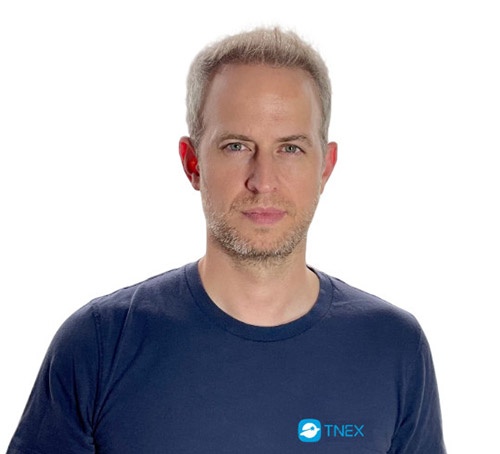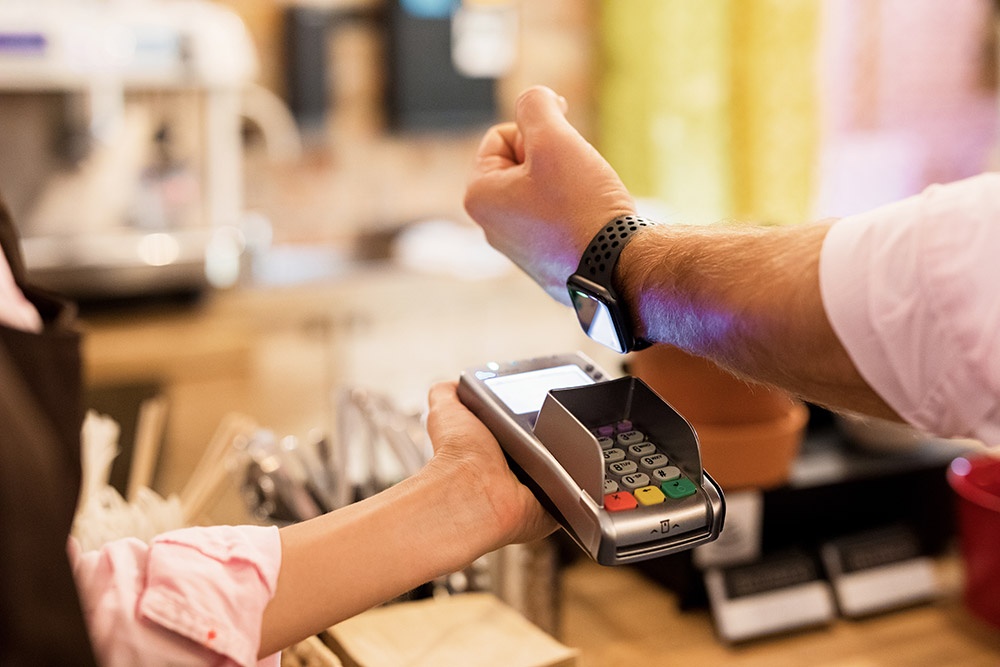Comprehensive finance to underpin Vietnam’s sustainabble growth
According to a survey by MasterCard, mostly young Vietnamese people are lacking personal finance management knowledge. What are the reasons leading to this problem?
 |
| David Jimenez Maireles, deputy CEO of TNEX |
Banking products are still very exclusive for many. According to RedSeer, one of the top home-grown consulting firms, as of October 2022 only half of the total population has a bank account in Vietnam. Insufficient funds, too expensive, or too far away were some of the reasons why 40 million Vietnamese still don’t have access to banking services.
“No fees when opening a bank account” is still a brand-new concept. In 2020, TNEX in partnership with MSB was the first in Vietnam to open a bank account for free. Many other banks have then also started to offer free bank accounts. The rise of mobile penetration and low data costs in the last few years with a more digital-savvy population has fostered the adoption of mobile banking, allowing people in rural areas to open a bank account without the need to visit a branch.
Now banks must double their efforts on digital channels to provide additional information about the different products and lower the barriers for customers to open other products (insurance, savings accounts, loans, or investment products).
However, Vietnam has a lot of work to do in terms of financial education. Banks need to keep working on making banking products more simple, transparent, and easy to use. A combination of access to banking products, financial education content, and trust in banks and the markets will support the next generation of users.
What do you perceive the comprehensive solutions to improve the lack of personal finance management knowledge among the youth?
Technology has changed everything in the last 20 years, and banking has been not an exception. Banks and traditional media should focus on increasing widespread basic financial literacy, promoting responsible banking products, and improving proactive financial planning.
The creation of educational resources like articles, podcasts, videos, and infographics will strengthen the customer knowledge in the short and long term. This is why a few months ago, TNEX launched Vitamin T. This education platform is teaching customers financial concepts, the difference between banking products, and ways to improve money management.
Since we launched the platform, we have published more than 250 articles to explain many aspects of the banking industry.
But this is not the only tool that banks can use to bridge the literacy gap. Other fintech groups are using personalisation, problem-solving products, and gamification to better serve customers. It’s important that the banking industry democratise personalised advice through digital channels.
 |
Each generation could have different views and thoughts about finance and need appropriate guidance methods. What are the specific solutions for each generation?
Every generation has their own challenges when entering the adulthood. Unfortunately, people of the Gen Z era went through lockdowns and online learning for many months. This time forces them to be more aware of money problems and be more diligent with their spending patterns.
We have also seen these results in the usage of our private financial management tool. TNEX helps customers to monitor their daily and monthly budget by using emojis to display their spending.
With a simple visualisation customers can know how much money they can spend today without surpassing their daily budget. We also allow customers to input their cash transactions in the app in three clicks.
For banks the most important part is to understand what their customers’ problem are and then work with them to co-develop products that help them daily, listen and understand what the challenges are they face in their life, and then apply technology to find a solution.
Integrating investment utility in digital finance platforms is of interest to young people. However, their biggest concern is often safety. How can this trust be built and strengthened?
Firstly, we need to make investment products available for everyone by removing, or at least reducing, all the barriers for customers to get access to these products. Until very recently, investment products were only accessible for wealthy individuals with hefty accounts to invest. Thanks to the new digital wealth investment platforms, a new wave of retail investors has started experiencing financial markets.
Reducing minimum investment amounts and fees will be key for the industry to attract more customers. The industry has an opportunity to make products available for everyone by helping customers start investing with as low as VND10,000 (43 US cents).
Secondly, regulation plays a key role on this industry. The State Securities Commission in 2022 issued a warning to investors about securities services that are not licensed by the agency in cyberspace. Given the current market conditions, many people are looking for products with higher returns without realising the consequences in case any risk may arise on those unlicensed platforms.
The third aspect is trust. There is a saying that trust is built in drops and lost in buckets. Let’s not forget that customers entrust banks to securely save their hard-earned money. New firms need to be patient – simple products, personalised advice, and education tools will help platforms to increase their trust.
How could personal finance management contribute to spurring sustainable economic growth in Vietnam?
Like having a personal trainer, actionable and personalised insights will be able to draw conclusions and offer advice that help customers to take specific actions. These tools empower users by offering them full visibility and control over what matters to them. Banks and fintech firms need to focus on promoting financial education to help users make more informed decisions about their spending and saving.
There is a huge opportunity to help the remaining 50 per cent of Vietnamese population get access to banking services and allow many more to get access to other banking products like investments, insurance, and lending products.
Vietnam banking systems are highly appreciated among the region in terms of digitalisation pace, yet the digital-only bank is quite rare. Why do you think this is?
Vietnamese spend almost seven hours a day online chatting with their friends, listening to music, watching movies, playing games, or posting on social media. There is no surprise that consumers in Vietnam are aware and truly interested in services offered by digital-only banks.
However, the digital banking services industry in Vietnam is in a nascent stage. Since 2020, a few additional banks have launched or announced their intention to provide digital-only offerings in the near future. I don’t think it will be difficult to think that there will be at least five digital-only banks by the end of 2023.
According to RedSeer, the number of digital bank accounts are expected to grow at a compound annual growth rate of 25 per cent in the next five years to reach over 13 million accounts by 2026. The high smartphone penetration, cheap data costs, and a digitally literate young population will accelerate the adoption of digital services, leading to a strong inclination to spend online.
The adoption of digital banking services is expected to rise as Southeast Asia’s banking landscape. Indonesia, Hong Kong, Malaysia, and the Philippines have already issued digital-only banking licences.
What are the pros and cons of building a digital-only bank?
Digital-only banks have many benefits in comparison with traditional banks. Old technology, lack of digital talent and leadership, and different culture are some of the greatest constraints that banks face when tackling their digital transformation.
Digital banks are very efficient and can scale up rapidly without investing a lot of money or hiring thousands of employees. They use brand-new technology that help them to streamline operations and distribution, allowing them to acquire customers for a fraction of the cost for traditional banks.
On the other hand, digital banks also have challenges. They need to build from scratch their product portfolio, gain customer trust, demonstrate they can manage their risks, and most important, achieve profitability.
 | Consumers become more prudent in post-pandemic personal finances The COVID-19 pandemic has transformed the personal finance landscape, with consumers now more conservative about their short-term spending habits and more prudent in their long-term financial plans. |
What the stars mean:
★ Poor ★ ★ Promising ★★★ Good ★★★★ Very good ★★★★★ Exceptional
Related Contents
Latest News
More News
- Tax sector wraps up 2025 and sets priorities for next year (December 25, 2025 | 14:00)
- A tipping point for digital and hybrid wealth management in Vietnam (December 23, 2025 | 13:33)
- $250 million deal targets women-owned SMEs, sustainable agriculture (December 22, 2025 | 17:40)
- Stock market posts resilient 2025 performance (December 19, 2025 | 18:17)
- Citi Vietnam receives 2025 AmCham CSR recognition (December 19, 2025 | 16:35)
- As global green supply chain reshapes, will Vietnam be left behind? (December 19, 2025 | 08:00)
- Banks gear up for massive capital increases (December 18, 2025 | 17:04)
- Securing capital and efficiency for Vietnam’s 2026-2030 growth ambitions (December 17, 2025 | 10:00)
- Energy sector in need of blended finance mechanisms (December 17, 2025 | 09:00)
- Vietnam still has room to mobilise capital for sustainable growth (December 17, 2025 | 08:57)

 Tag:
Tag:





















 Mobile Version
Mobile Version